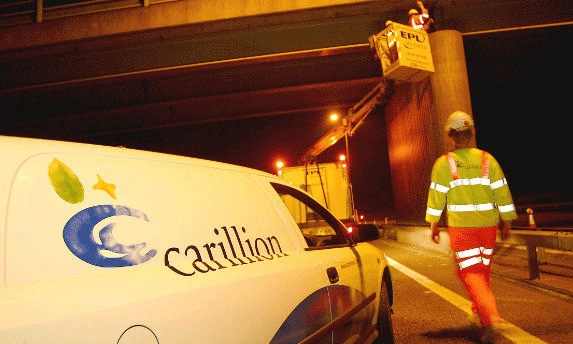Carillion’s forays overseas were largely disastrous, says a UK Parliamentary report looking at the collapse of the troubled contractor.
Citing a 2011 contract with a Middle East developer to build residential, hotel and office buildings that led to a £200 million dispute, the report said: “Regardless of the true picture — and we are baffled that neither the internal nor external auditors could tell us — it is abundantly clear that the contract was not well-managed by Carillion. A July 2017 Carillion board ‘lessons learned’ pack conceded as much, citing the company’s weak supply chain, poor planning and failure to understand the design requirements up front,” continues the report compiled by a Parliamentary committee formed of MPs from both Work and Pensions and the Business, Energy, Industry, Strategy departments.”
Carillion also had difficulty adapting to local business practices, said the report: “(Former chief executive) Richard Howson who after being sacked as chief executive in July 2017 was retained in a new role to maintain morale and negotiate payment in key failing contracts, explained, ‘working in the Middle East is very different to working anywhere else in the world’.
“Carillion’s directors attempted to ascribe the company’s collapse to unforeseeable failings in a few rogue contracts. But, responding to difficulties in UK construction, Carillion knowingly entered risky new markets. The overriding impression is that Carillion’s overseas contract problems lay not in a few rogue deals, but in a deliberate, naïve and hubristic strategy.”
The report continues: “The July 2017 lessons learned pack highlighted the breadth of problems in Carillion’s contract management. Andrew Dougal, chair of the audit committee, noted there appeared to be a ‘push for cash at period end’, which would reflect well in published results, and ‘inadequate reviews on operational contracts’. As a large company and competitive bidder, Carillion was well-placed to win contracts. Its failings in subsequently managing them to generate profit was masked for a long time by a continuing stream of new work and, as considered later in this chapter, accounting practices that precluded an accurate assessment of the state of contracts.
“Carillion’s business model was an unsustainable dash for cash. The mystery is not that it collapsed, but how it kept going for so long. Carillion’s acquisitions lacked a coherent strategy beyond removing competitors from the market, yet failed to generate higher margins. Purchases were funded through rising debt and stored up pensions problems for the future. Similarly, expansions into overseas markets were driven by optimism rather than any strategic expertise. Carillion’s directors blamed a few rogue contracts in alien business environments for the company’s demise. But if they had had their way, they would have won 13 contracts in that country. The truth is that, in acquisitions, debt and international expansion, Carillion became increasingly reckless in the pursuit of growth. In doing so, it had scant regard for long-term sustainability or the impact on employees, pensioners and suppliers.”

